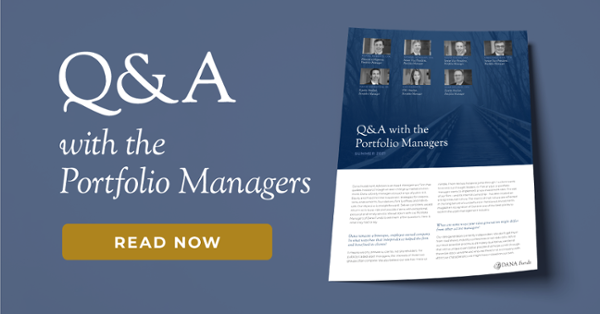Reflections on Stocks’ September Swoon
Stocks recovered some ground last week, but September was the roughest month for U.S. equities since stocks began rebounding from bear market territory in late March. Below are a few quick takeaways on the September swoon, what may lie ahead, and how we are investing:
- Given the disconnect between Wall Street and Main Street, a correction wasn’t entirely surprising. In the spring, the question clients asked us most frequently was why stocks continued to drive higher, despite high unemployment and a clear downturn in economic activity.
The short answer was that fiscal and monetary stimulus boosted markets and gave hope that the economy would rebound quickly. In September, investors may have woken up to the reality that the economic recovery will be uneven, and economic activity and data will probably move in fits and starts. An impasse in Congress around additional coronavirus relief has raised additional concerns about the economic recovery.
The potential good news, as we shared in our financial sector outlook last week, is that while the macroeconomic picture is still unclear and the recovery could be uneven, the pandemic-induced economic downturn doesn’t look like a long-tail recession. While there is an impasse on additional relief, economic stimulus has been massive and kept many struggling consumers afloat. We wouldn’t be surprised to see further stimulus efforts before or after the election. A coronavirus vaccine could also support increased economic activity in the coming quarters.
- Extreme concentration risk didn’t help indices in September. We wrote about this in a blog post in May (Top-Heavy & Troubling: S&P 500 Bears Extreme Concentration Risk), but stock indices such as the S&P 500 are extremely top-heavy. At the time we first discussed index concentration risk, the five largest stocks in the S&P 500 accounted for more than 20% of the entire index, the highest level in at least 30 years.
The tech heavyweights at the top of the index – Microsoft, Apple, Amazon, Alphabet and Facebook – had an oversized influence on market performance in recent years. This was true during the market rebound that began in late March. In September, those stocks fell – likely because investors started to question extreme valuations for these stocks – and that had a larger bearing than normal on the index due to their size within it.
- The correction was quick, and underscores the perils of trying to time markets. A key tenet to our investment philosophy and process is to stay fully invested. We don’t hold cash as a market call, because we think the near-term direction of markets is much harder to predict than the long-term drivers of individual stocks. This entire year provides a microcosm of how market timing can backfire.
Few could have predicted stocks’ decline early this year as news of the virus spread. The result was the quickest drop into bear market in history. Increasing cash allocations after the downturn also would have caught investors flat-footed, as the market experienced its quickest rebound from bear market territory.
Stock indices continue to move quickly, as the NASDAQ’s correction (defined as a drop of 10% from a prior peak) in September was its fastest ever. Amid these quick changes, we would advise investors to remain focused on the long term, and to stay fully invested.
How Are We Investing?
As with most long-term investors, market movements in a single month don’t influence our investment process. But the investment environment does underscore why a couple hallmarks within that process may prove beneficial.
First, our portfolios equal-weight the stocks we hold within each sector. We believe this eliminates some of the concentration risk that currently exists within passive strategies or indices. We like the business models and growth potential of some of the larger technology stocks in the S&P 500, but feel comfortable holding them at more reasonable position sizes where they don’t have an outsized influence on total portfolio performance the way they have with the index in recent months.
Second, we remain fully invested in our portfolios, and are not trying to time the market by increasing or decreasing our allocation to cash. In a year where stocks have moved up – and down – quite quickly, we believe this philosophy is prudent.



